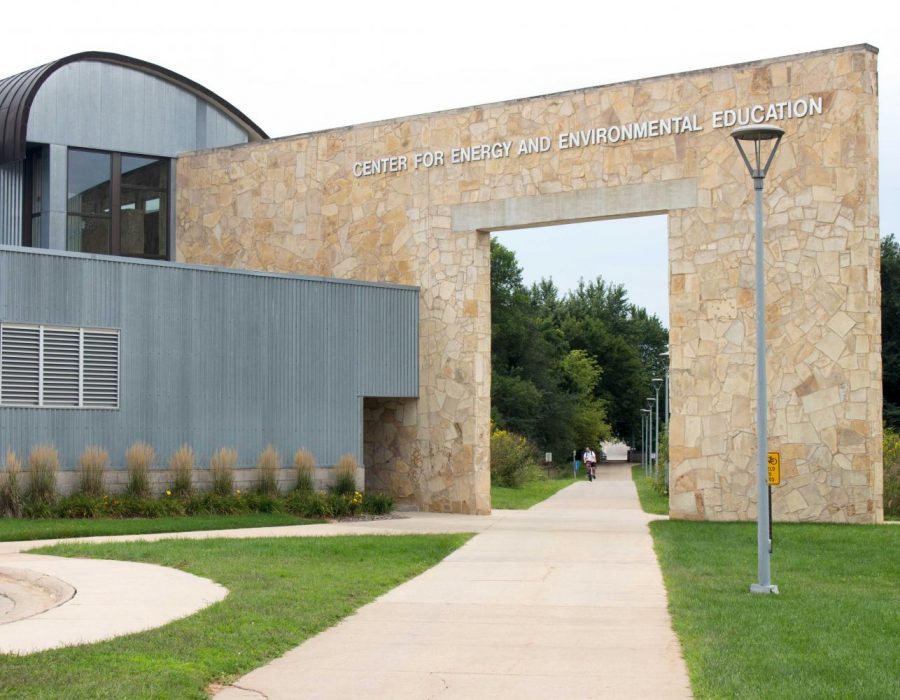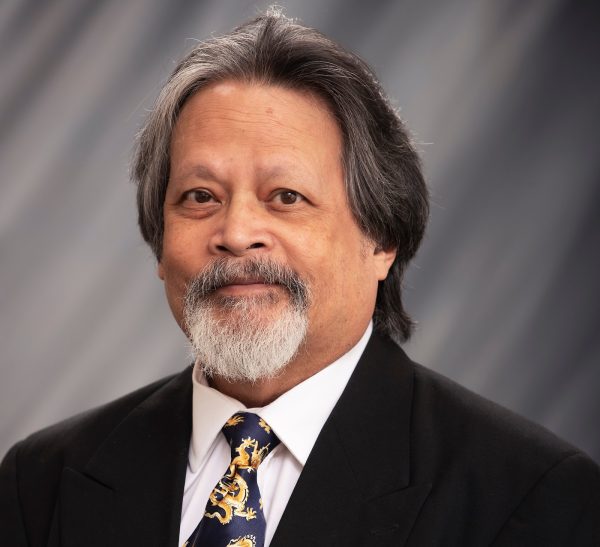Stepping towards sustainability
Oct 19, 2017
President Trump is withdrawing the U.S. from the Paris Climate Agreement, which was signed by his predecessor President Barack Obama through an executive order, the same method by which Trump intends to withdraw.
The Paris Climate Agreement, a treaty created within the United Nations (U.N.), addresses environmental protection with the specific goal to keep the planet from warming past a specific level. It aims to keep warming within 1.5 degrees Celsius of pre-industrial revolution levels.
Kamyar Enshayan, the director of UNI’s Center for Energy and Environmental Education (CEEE), sees the withdrawal as a step backward for environmental action.
“It literally means more foot-dragging, more inaction, more damage and more pollution, more destruction due to extreme weather, such as we are witnessing in Texas, Florida and now California,” Enshayan said. “More floods, more droughts, more intense storms, more extreme everything.”
According to Enshayan, students need to understand the significance of the Paris Agreements and what the withdrawal means for the United States.
“[The Paris Agreement] is like the world’s nations agreeing on something fundamental for our shared future — that slavery is a bad thing or that nuclear weapons should rest in peace,” Enshayan said. “The Paris Agreement is a step towards protecting the stability of the atmosphere that supports all life as we know it.”
Brian Warby, assistant professor of political science, sees global political ramifications for withdrawal.
“It paints the U.S. in a negative light. It makes it look like the U.S. is the free rider,” Warby said. “Per capita, the U.S. pollutes more than any other major country. We’re expecting everybody else to do the work of climate change while we sit back and reap the benefits of running our economy on fossil fuels — it sullies our reputation as a global leader.”
Warby also explained that the Paris Climate Agreement is a continuation of past global agreements.
“The Paris Agreements are negotiated by members of the U.N., so it is a follow up to previous environmental protection agreements,” Warby said. “All of it started with the Rio Earth Summit in the ‘90s, followed by the Kyoto Protocol and the Copenhagen round of negotiations.”
The Paris Climate Agreement is different than past global environmental agreements in its flexibility.
“With previous agreements, there was a rule of how much [the signees] have to reduce their emissions by, but with the Paris Climate Agreement, they have nationally, or individually, determined contributions,” Warby said. “It’s up to the countries to decide how involved and proactive they want to be.”
The United States’ commitment was to reduce greenhouse gas emissions by 26 to 28 percent by 2025, measuring the reduction against 2005 emission numbers. In 2005, the US emitted over six billion metric tons of carbon dioxide, according to the Environmental Protection Agency.
“One of the big things the Obama Administration did, which would have almost completely met our commitment under the Paris Agreements, was the Clean Power Plan,” Warby said. “The Clean Power Plan, though, was recently repealed by the Trump Administration; it never went into effect.”
The Clean Power Plan would have forced states to begin closing coal power plants, thus reducing the use of fossil fuels. Even without this legislation, though, Warby explained that the United States may continue to see environmental action at state and local levels.
“A lot of state governments have taken considerable action toward addressing climate change,” Warby said.
According to Warby, the country has also seen a natural gas boom due to the reduced cost of natural gas.
“Natural gas is cheaper, cleaner and, quite frankly, it’s easier to deal with than coal,” Warby said. “The sheer power of the market may get us [to the Paris Climate Agreement goal].”
CEEE Energy Program Manager Eric Giddens agrees, to an extent, regarding the power communities must take with their own actions.
“It is up to state and local governments and businesses to take action in the absence of leadership at the federal level,” Giddens said. “The hopeful thing is that, if every community commits to reducing greenhouse gas emissions, we still have the ability to meet the overall commitment that our nation agreed to in the Paris Accord.”
Locally, Cedar Falls Utilities uses coal, a fossil fuel, in the winter to meet the demand of heating in the area.
“CFU still relies on coal to a significant degree in the winter,” Warby said. “CFU is pretty forward thinking and has invested in wind energy, but during the winter, in those really cold weeks, [renewable energy] is not enough.”
Action toward environmental protection happens at UNI in a variety of ways. The CEEE and several student organizations foster a community of environmental awareness, including UNI Green Project and Student Nature Society.
The CEEE’s commitment to reducing greenhouse gas emissions, or the gasses emitted from burning fossil fuels that blanket the Earth and result in global warming, according to Giddens, can be seen through a variety of efforts.
“The CEEE is working with the cities of Cedar Falls and Waterloo, and Black Hawk County, to identify the sources of all greenhouse gas emissions and then to develop plans for reducing those emissions to levels similar to the goal that the United States committed to in the Paris Climate Accord,” Giddens said.
“These plans will be composed of strategies such as development of policies that will result in more walking and biking; improved infrastructure to better support walking, biking and public transportation; programs to change all lighting to high-efficient LED’s; improved building codes that reduce energy consumption; promotion of solar energy generation and methane capture and use at landfills and wastewater treatment facilities, to name a few,” Giddens said.
John Streicher, the associate director of engineering and utilities at the Physical Plant, has headed over a dozen energy projects at UNI that result in utility savings.
“The savings is the result of many efforts, including select energy projects, major building renovations, building system commissioning and re-commissioning and building system scheduling,” Streicher said.
According to Streicher, several buildings are currently undergoing lighting conversion, including the Wellness and Recreation Center (WRC) and Strayer-Wood Theatre. Past projects to conserve energy include retrofitting lights at the Power Plant and upgrading heating, ventilation and air conditioning controls for Wright Hall and the WRC.
Enshayan, Giddens and Gabriella Ruggiero, president of UNI Green Project, urge students to get involved alongside the CEEE and the City of Cedar Falls.
“[Students can] elect public officials that are committed in closing the door on dirty fossil energy and opening the door to energy conservation and clean renewable energy,” Enshayan said. “Second, pay attention to our cultural habits that waste energy […] like driving 10 blocks to campus rather than walking or biking.”
Ruggiero encourages students to understand climate change removed from politics.
“Too often climate change is politicized, but it is something that every one of us will have to address in our lifetime, despite political ideology,” Ruggiero said. “While 60 percent of Americans find global warming personally important, 68 percent of us never or rarely talk about it. Change can’t be initiated if we don’t start conversations or even acknowledge that climate change is an issue. Appealing to science in these conversations is not enough; we must also appeal to common values that climate change threatens. Acknowledge each other’s humanity and build upon that to find possible solutions.”














